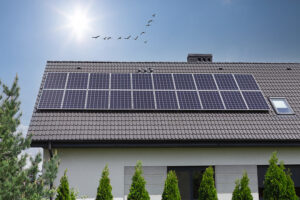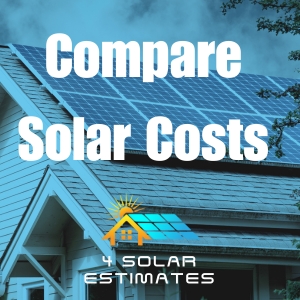
How to Choose the Right Type of Solar Panels for Your Home in 2024
As the world strides further into the 21st century, the shift towards renewable energy sources becomes not just a matter of environmental responsibility but also of household economics and energy independence. Solar energy, with its promise of clean, inexhaustible power, stands at the forefront of this transition. The year 2024 marks a significant point in solar technology advancements, offering homeowners more options than ever to harness the sun’s power efficiently. This guide aims to navigate the complex landscape of solar panel technology, helping you choose the right type for your home. From understanding your energy needs to evaluating the latest solar panel technologies, we’ll equip you with the knowledge to make an informed decision.
Understanding Solar Panel Basics
Before delving into how to choose the right solar panels for your home, it’s crucial to understand the basics. Solar panels, or photovoltaic (PV) systems, convert sunlight into electricity through PV cells made of semiconductor materials. The most common types of solar panels for residential use include:
- Monocrystalline Solar Panels: Made from a single, pure crystal of silicon, these panels are known for their high efficiency and sleek appearance.
- Polycrystalline Solar Panels: Constructed from fragments of silicon crystals melted together, these offer a more affordable option with slightly lower efficiency.
- Thin-Film Solar Panels: These panels are made by depositing one or more thin layers of photovoltaic material onto a substrate. They’re flexible and less affected by high temperatures.
Understanding these basics sets the stage for a deeper exploration of how to match the right type of solar panel to your home’s specific needs.

Evaluating Your Solar Needs
Choosing the right solar panels starts with a clear assessment of your home’s energy requirements and solar potential.
- Energy Consumption Analysis: Begin by reviewing your electricity bills to determine your household’s average energy usage. This information will help you estimate the size of the solar system needed to meet your energy needs.
- Roof Space and Condition: The available space on your roof and its condition play a pivotal role in determining the type and number of panels that can be installed. Monocrystalline panels, being more efficient, might be preferable for limited space, while polycrystalline panels can be a cost-effective solution for larger areas.
- Sunlight Exposure: Your home’s location, the direction your roof faces, and any shade from trees or buildings affect the amount of sunlight your solar panels will receive. Areas with high sunlight exposure can benefit from various panel types, while homes in less sunny locations might need more efficient panels to maximize output.
- Grid-Tied vs. Off-Grid Systems: Deciding between a grid-tied system, which allows you to sell excess electricity back to the grid, and an off-grid system, which requires battery storage for when the sun isn’t shining, depends on your energy goals and local infrastructure.
Understanding the nuances of solar panel types is pivotal in making an informed choice for your home. Each type of solar panel has its own set of advantages, efficiency ratings, and aesthetic impacts, which can significantly influence your decision based on your home’s specific needs and your personal preferences.
Understanding Solar Panel Types
Monocrystalline Solar Panels are often regarded as the premium solar product. They have a higher efficiency rate, thanks to the purity of the silicon used. They perform better in low-light conditions compared to their polycrystalline counterparts and have a longer lifespan, often exceeding 25 years. However, this comes at a higher cost. They’re a great option for homeowners with limited roof space who need to maximize energy production.
Polycrystalline Solar Panels are recognized by their blue hue and the visible flakes of silicon within the cells. They are less efficient than monocrystalline panels but come at a lower price point. These panels are a good choice for homeowners with more roof space who are looking for a balance between solar cost and efficiency.
Thin-Film Solar Panels stand out due to their flexibility and lightweight. This type can be manufactured with various materials, including cadmium telluride (CdTe), amorphous silicon (a-Si), and copper indium gallium selenide (CIGS), each offering different efficiencies and cost implications. Thin-film panels are less efficient than crystalline silicon panels but can be a better choice for large, commercial spaces or homes with specific architectural considerations. They also perform better in high temperatures and can be more aesthetically pleasing due to their uniform appearance.

Emerging Technologies in Solar Panels
Advancements in solar technology continue to introduce new options to the market, including Bifacial Panels and Passivated Emitter and Rear Cell (PERC) technology. Bifacial panels can absorb sunlight from both sides, increasing energy production without needing additional space. PERC technology enhances the efficiency of solar cells by adding a layer that reflects light back into the cell, allowing for more energy absorption. These emerging technologies promise even greater efficiency and potential savings, making them worth considering for those looking to make the most of their solar investment.
Factors to Consider When Choosing Solar Panels
When selecting the right solar panels, consider the following factors:
- Efficiency vs. Cost: High-efficiency panels often come with a higher price tag. Assess whether the long-term savings on your energy bills justify the initial investment.
- Warranty and Lifespan: Look for panels with long warranties and lifespans to ensure your investment is protected. Panels with a 25-year warranty are standard, offering peace of mind over the system’s life.
- Aesthetics: Consider how the panels will look on your roof. Monocrystalline panels offer a sleek, uniform look, while thin-film panels can be more discreet and versatile.
- Local Regulations and Incentives: Some areas have specific regulations or offer incentives for solar panel installation. Research these factors as they can influence your decision on the type and size of the system you choose.

Making the Decision
Consulting with a solar expert can provide personalized advice based on a thorough assessment of your home. Experts can offer insights into the best panel types for your specific situation, taking into account your roof’s orientation, potential shading, and your energy goals.
Comparing quotes and products from different providers is also crucial. Look for competitive pricing but also consider the quality of the panels, the reputation of the manufacturer, and the installation service’s expertise.
Planning for the future is essential. If you anticipate your energy needs increasing, consider a system that allows for easy expansion. Additionally, technology advancements may offer opportunities for upgrades that can enhance your system’s performance over time.
Choosing the right type of solar panels for your home is a significant decision that will impact your energy independence and financial savings for years to come. By understanding the different types of solar panels available, considering your home’s specific needs, and consulting with professionals, you can select a system that provides the best return on investment. As solar technology continues to advance, homeowners have more options than ever to tailor their solar energy systems to meet their unique needs, making now an excellent time to consider making the switch to solar energy.

Leave a Reply